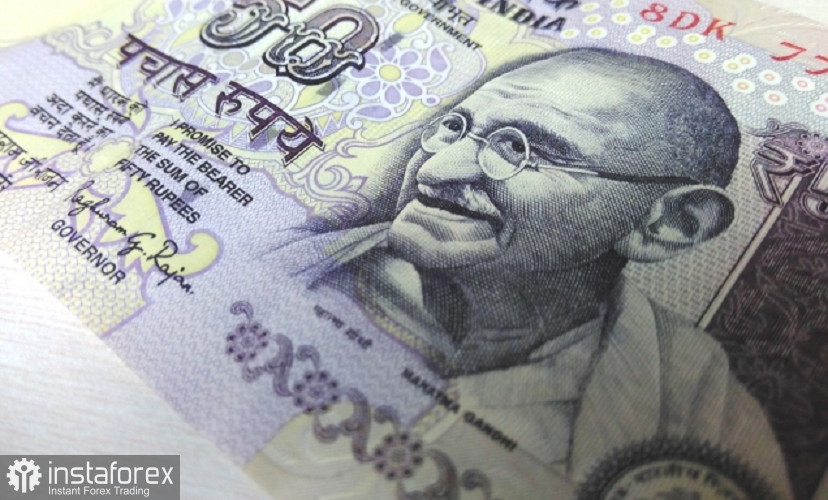The Indian rupee continues to weaken as demand from exporting companies pushes the dollar higher. The weakness in Asian equities and currencies has now spilled over into domestic markets.
Indian rupee: declining following GDP

Data released by India's statistics authority showed India's merchandise trade deficit widened to $26.91 billion in October. The drawdown was more than $1 billion in net revenue, compared to $25.71 billion in September.
India's merchandise exports fell by almost $6 billion to $29.78 billion from $35.45 billion in the previous month, while imports fell to $56.69 billion from $61.16 billion in the same period.
The reasons are not only global economic problems, but above all crop failure due to heavy rainfall during the harvest period. The crop failure reached domestic markets, affecting the cost of basic food products - flour, legumes. After grain, meat, eggs and milk also become more expensive. Basic foodstuffs form the basis of household expenditures in the country.
Amid the news, the rupee fell 0.25% to 81.2975 per dollar. The currency lost almost a percentage of its high of 80.51 on Monday, partly due to volatility in the Asian market.
The huge demand for cash dollars in both the spot and forward markets is spurring the fall. Of course, foreign banks also buy on behalf of their importing clients.
At the same time, the decline in USD/INR forward premiums made importers attractive to hedgers, which led to an increase in dollar outflows. The cost of hedging the 6-month dollar is down 25 basis points this week.
As a result, for the day the dollar index fell by 0.3% after the initial increase. There is hope that the currency will bounce back postmarket as US President Joe Biden reassured the international community by saying that the missile that caused the explosion in NATO member Poland may not have been fired from Russia.
However, the excitement peaked in the early Asian session. As a result, Asian equities and currencies remained volatile, with the Chinese yuan and equities down 0.5% each.
Concerns about a rise in COVID-19 cases in the major cities of Guangzhou, Beijing and Zhengzhou also played a role.
The recent turmoil in the currency markets has also left investors wondering which way the Indian currency will move. With the expected recession in developed markets hitting global trade, some believe the dollar will bounce back and put pressure on Asian currencies. This is a realistic option, at least during the early recession. The dollar rally is far from over, and it makes sense to keep the rupee forecast at 83.50 and 84-85 by the end of December and the end of March, respectively. At least it is not noticeable that the Federal Reserve will stop in the short term, so it is only natural to expect a resumption of the dollar rally.
 English
English 
 Русский
Русский Bahasa Indonesia
Bahasa Indonesia Bahasa Malay
Bahasa Malay ไทย
ไทย Español
Español Deutsch
Deutsch Български
Български Français
Français Tiếng Việt
Tiếng Việt 中文
中文 বাংলা
বাংলা हिन्दी
हिन्दी Čeština
Čeština Українська
Українська Română
Română

